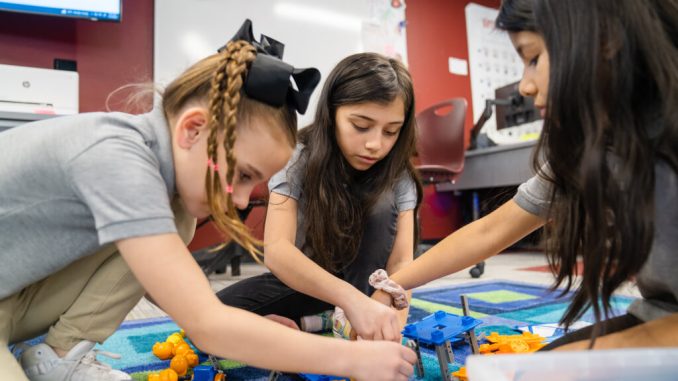
Diversity and inclusion form the foundation of a thriving educational environment. Diversity of every sort –race, ethnicity, gender, culture/religion—as well socioeconomic status and ability–enriches the learning experience for all. It creates an environment in which people are less likely to feel excluded or unwelcome because they do not fit into some preconceived mold–that is why we must continue to find ways to bring these two concepts together. In this article, I will introduce the significance of Diversity and Inclusion in Education. However, the situation seems set up for failure: everyone brings their own value but only some people can receive an income; voices from other cultures are often unheard or ignored as well. We will discuss some strategies that can be used to bring equity and opportunity to every student in Learning Communities based on these two concepts.
Understanding Diversity and Inclusion:
Diversity involves creating a diversity of values according to different demographics and geographic locations. Inclusion is about the creation of an environment that welcomes and encourages participation from all those involved, where nobody is excluded or has their value lowered in any way because they happened to be born into one group or another. Together, diversity and inclusion foster a sense of belonging, allow us to celebrate each other’s differences in an atmosphere that encourages equity and access for everyone.
Creating Culturally Responsive Classrooms:
Culturally responsive teaching recognizes and values the cultural background, language, and experiences of each student. Teachers can construct culturally responsive classrooms by integrating diverse perspectives, materials, and instructional strategies that appeal to the cultural identities of their learners. This includes use of language which clearly communicates that all who are present in a given school or area are welcome there. As well it means inclusive literature and resources materials that reflect everybody among us in national life–and perhaps most importantly cultural studies written in line with our own standards but concerning YOUR PEOPLE! Culturally responsive teaching helps all of us to find motivation and belonging in school.
Addressing Implicit Bias and Stereotypes:
Implicit biases and stereotypes influence perceptions attitudes, and interactions within an educational setting. Educators should address and challenge such biases in order to build new learning environments where each child has a fair chance at success. Offer training, professional development about cultural competence and the anti-bias approach. Encouraged self-reflection, open dialogue in which to examine unconscious stereotypes. Educators can offer fairness, understanding, mutual recognition by confronting biases.
Address students’ diverse needs head-on. Differentiated instruction and varied support that can fit the individual differences of all relevant student populations and help them farm themselves. Provide alternative types of learning, adaptations, and modifications according to each student’s special needs. Make assistive technology and resources available, and supply services to handle any problems from learning disabilities or language barriers that students may have. Naturally, as we tailor our instruction even to those students among us who usually get left invisibly off any such type map, so do we promote symmetric opportunity for everyone to engage academically.
Raise consciousness as well as awareness: In the processing of these lines, it is vital that curriculum materials, textbooks, classroom materials and teaching resources reflect the abundant nature of different backgrounds and ways which comprise our world. Emphasize difference with all kinds of role models–male or female leaders who have achieved noteworthy laurels across many cultures and histories. Incorporate material that, through representation or message, conveys the message positively: people are people but this is something completely different. Advancing this agenda of representation and visibility will confirm the authenticity of students’ identities, foster their sense of belonging in school and cities, achieve trueness even to their historic alienated experiences through social justice lectures.
Providing a Safe and Inclusive Learning Environment:
Support innocent learning surroundings for every student. Establish norms, expectations, and policies that encourage courtesy, civility and inclusiveness. In instances of bullying or discrimination, take equitable and preventive measures before the problem becomes entrenched. Provide resources, referrals and counseling services so students are able to maintain emotional as well as academic health. By making spaces safe and inclusive, all students can feel secure and colourfully enlivened in their academic activities.
Develop Intercultural Competence and Empathy:
It is essential to acquire intercultural competence in a global Society. Incorporate activities, experiences and discussions that promote empathy, understanding across societies, taking standpoints of others into account. Encourage students to have cross-cultural interactions and carry out collaborative projects such as group presentations, composing essays about your country or themes involved in another foreign culture for a different class; work in a science fair project on global energy solutions which benefits all humanity without hurting any nation’s economy etc. Such cross-cultural endeavors involved directly people from many backgrounds probably helped produce uniquely American-their achievements became everyone’s Benefit. This great experiment paid off in the break down of not only fears but false hopes too!
The conclusion drawn from this essay, then, is that diversity and inclusion in education are not only moral imperatives but also fundamental concerns when trying to achieve equitable, empowering learning places that enrich everyone’s lives. Through embracing differences, enabling extra-curricular activities that are open to people of all diversities, consciousness of bias and how to challenge it, meeting diverse learning needs, promoting representation, creating safe harbors of learning–and last but not least nurturing a spirit intercultural competence among educators–they can offer equal opportunity and access to all their students A commitment to diversity and inclusion not only increases academic achievement but also fosters a sense of belonging, and prepares students for success in the world of today.
Leave a Reply